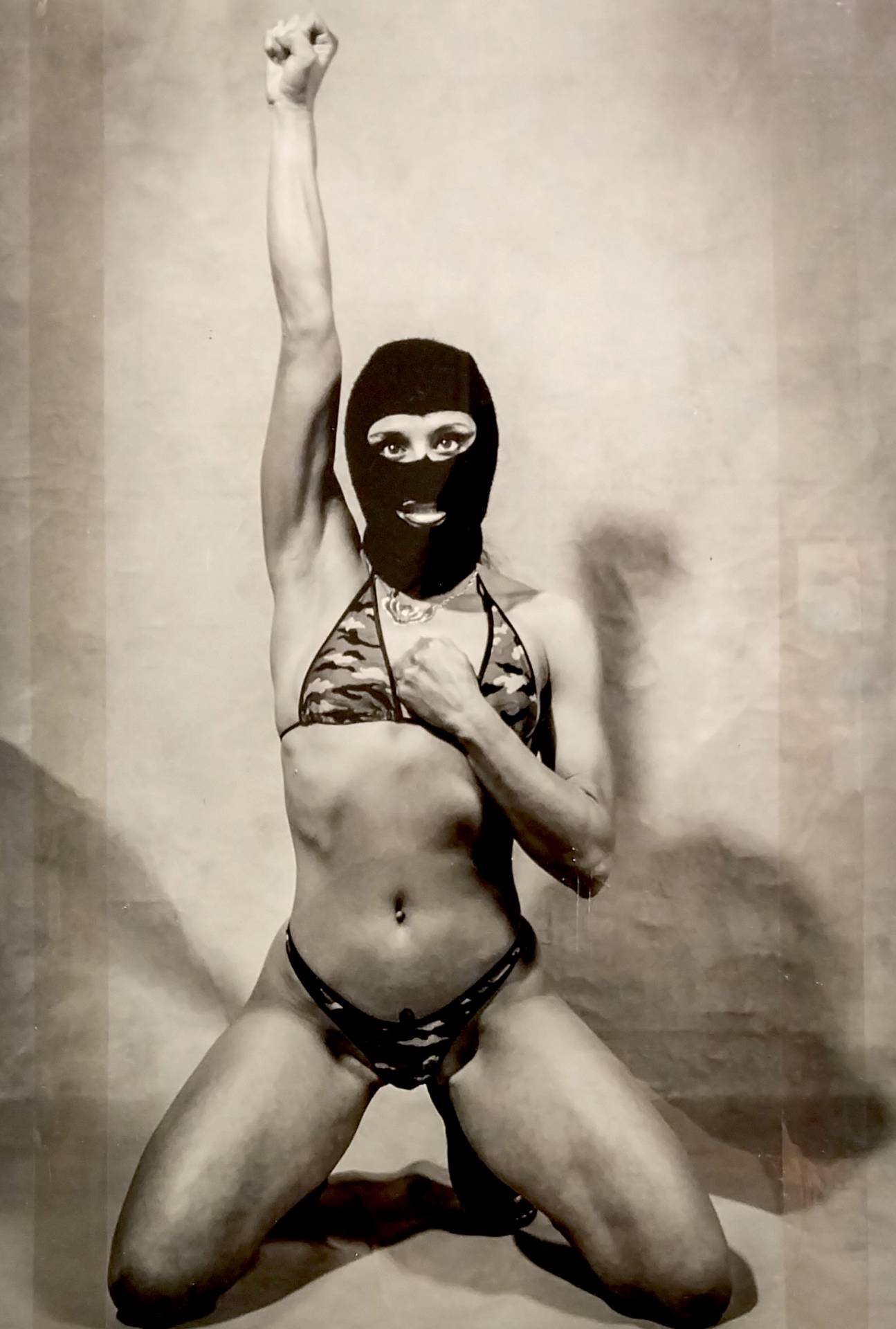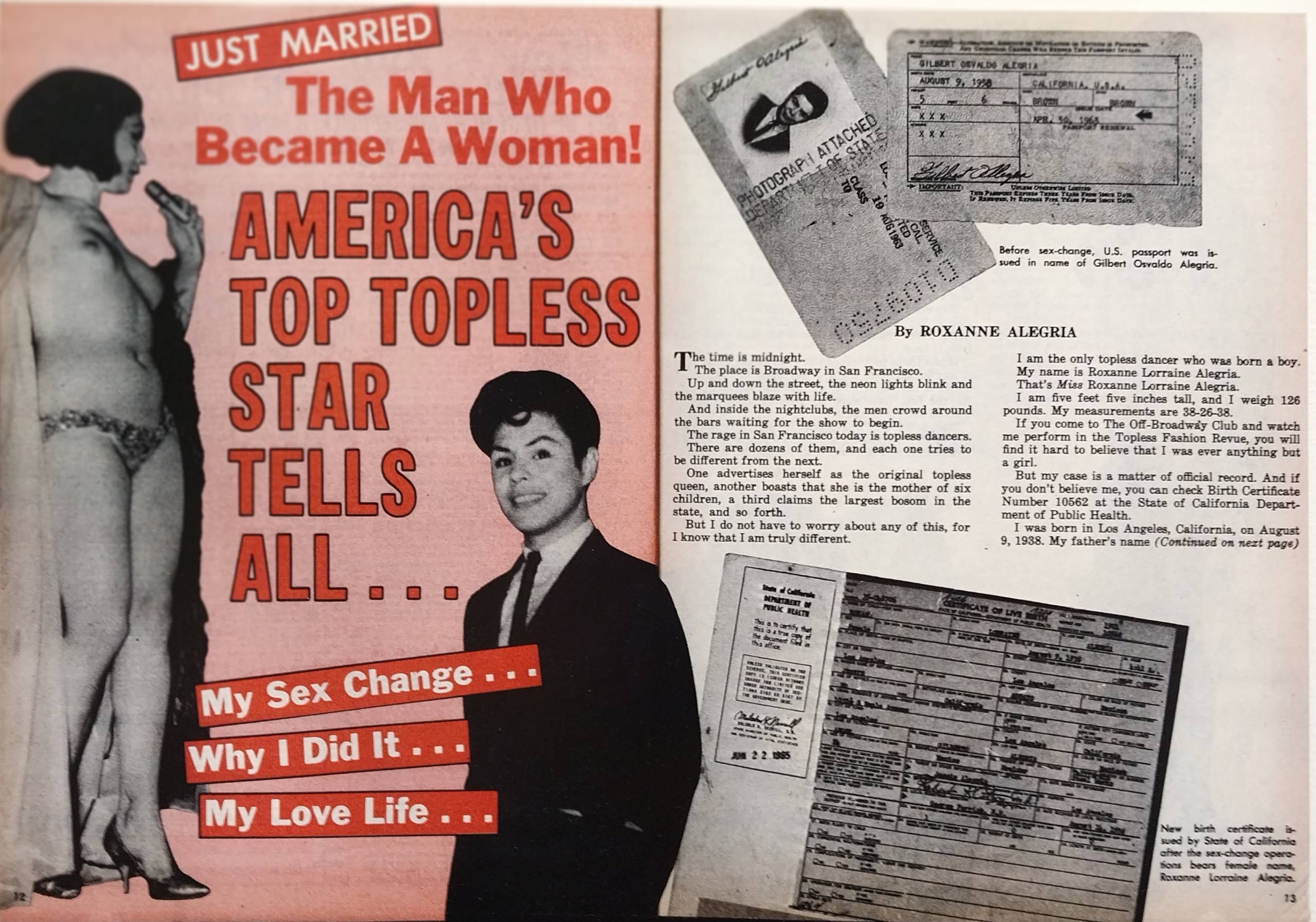
In 1967, Roxanne Alegria wrote an essay about her life as a topless dancer in San Francisco for Confidential — a scandalous magazine that covered unabashedly taboo topics of the time.

In 1967, Roxanne Alegria wrote an essay about her life as a topless dancer in San Francisco for Confidential — a scandalous magazine that covered unabashedly taboo topics of the time.
“The rage in San Francisco today is topless dancers,” Alegria wrote. “There are dozens of them, and each one tries to be different to the next … I do not have to worry about any of this, for I know I am truly different. I am the only topless dancer who was born a boy … If you come to the Off Broadway Club and watch me perform in the Topless Fashion Revue, you will find it hard to believe that I was ever anything but a girl.”
Between 1863 and 1974, it was illegal in California to wear clothing that didn’t belong to the gender you were assigned at birth. To be openly transgender in the 1960s didn’t just carry personal risks, it came with potential legal pitfalls as well. The frankness and openness with which Alegria talked about her gender was quite revolutionary — even if the exploitive framing of her story within the magazine would never fly today.

Alegria’s is just one of the stories featured in a new exhibit at the GLBT Historical Society in San Francisco’s Castro District. Erotic Resistance: Performance, Art, and Activism in San Francisco Strip Clubs (1960s–1990s) tracks LGBTQ+ performers around the city whose work — even if not respected by mainstream America — helped to educate the public in myriad ways.
Items on display include personal photos, magazine clippings and even official paperwork. The exhibit begins with drag performers at the legendary Finnochio’s, covers trans dancers like Alegria and her close friend Vicki Starr, and gives an overview of the Lusty Lady dancers who successfully unionized in the 1990s. The ephemera on view also gives props to Arlene Elster, one-time owner of the Sutter Street Cinema and a pornographer in her own right. Elster fought obscenity charges all the way to the Supreme Court in the 1970s before retiring with her girlfriend to Sonoma.
Curated by Gigi Otálvaro-Hormillosa, and based on her new book Erotic Resistance: The Struggle for the Soul of San Francisco, the Erotic Resistance exhibit is a testament to the ways in which folks living on society’s fringes can defiantly forge paths towards both wider recognition and better compensation. When they successfully do so, it’s a victory not just for them, but for future generations of sex workers. Erotic Resistance allows us the privilege to spend some time in their gorgeously righteous company — a true and genuine pleasure.
‘Erotic Resistance: Performance, Art, and Activism in San Francisco Strip Clubs (1960s–1990s)’ is on display now at the GLBT Historical Society (4127 18th St., San Francisco).